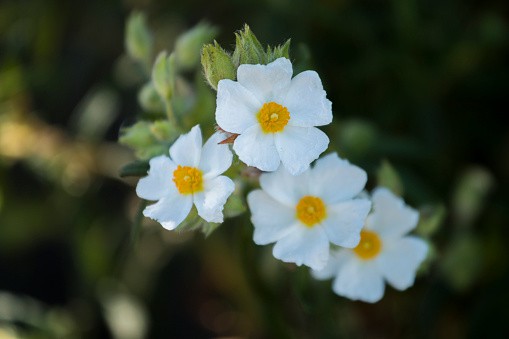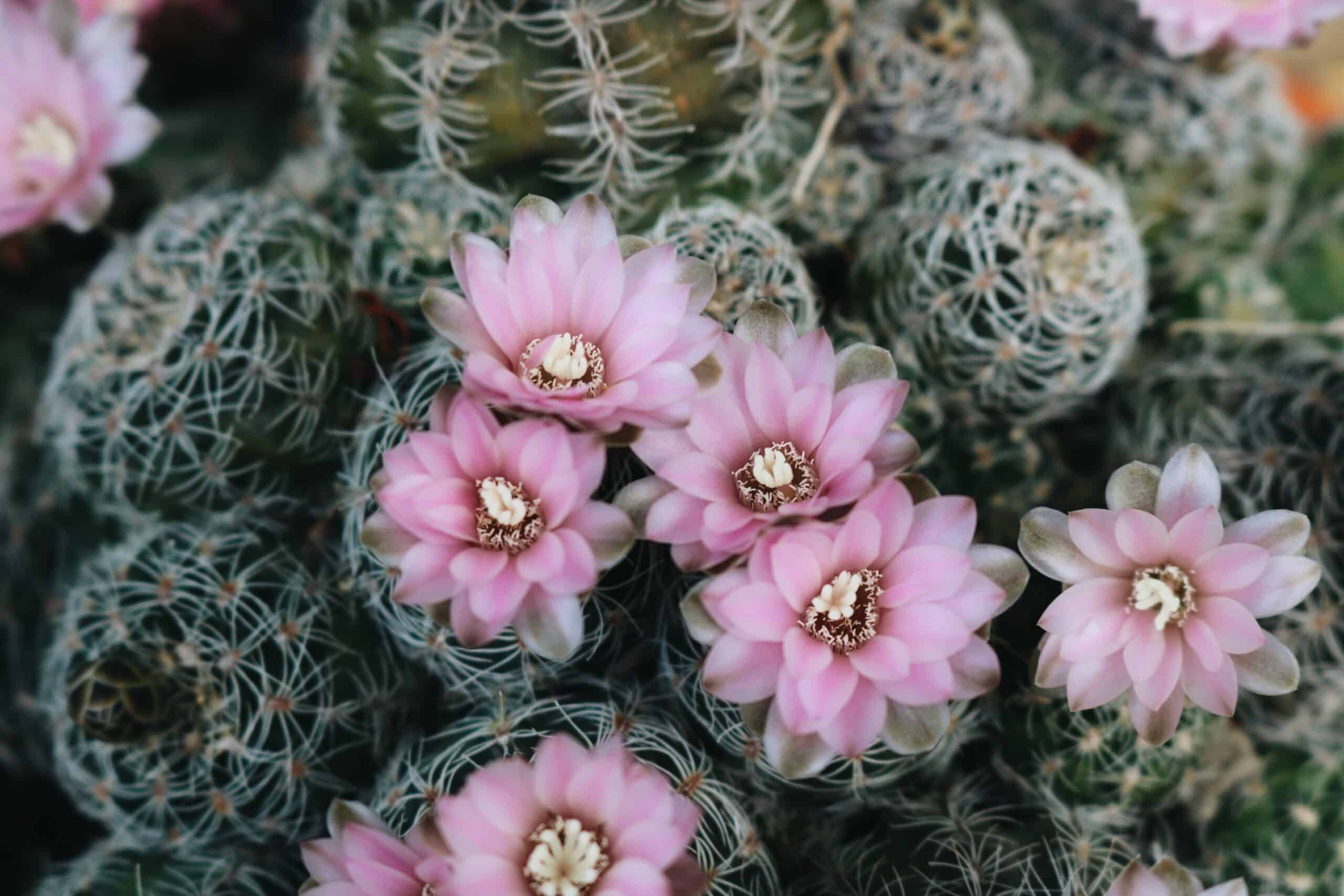Cistus Monspeliensis, otherwise known as the Rock Rose, is an evergreen shrub native to southern Europe and northern Africa. It is a member of the Cistaceae family and is classified as a perennial. Its name comes from the Latin ‘cistus’ meaning box or case, which is related to its hard flowering base. The plant is characterized by narrow, sticky leaves giving it a year-long texture that can be used to add a certain vibrant feel to any garden. From spring to summer, the shrub will produce panicles of two to eight flowers, each with five white petals and five sepals wrinkled like crepe paper.
How to Plant and Grow Rock Rose
Rock Rose prefers a sunny location in well-drained soil. Planting should be done in the fall or winter, when dormant. The shrub should have access to medium to low soil moisture for the first year after planting. The soil type should be sandy or loamy, and the preferred soil acidity is on the basic side. It needs fertilizing every spring with a balanced acid fertilizer and woodchip mulch. It is also important to take into account the temperatures of the area where the Rock Rose is being grown, as it can die off from sub-zero temperatures.
Meaning and Symbolism
The Rock Rose is said to symbolize enthusiasm, beauty, and quickness. The flower itself is said to express joy, singularity, and demure beauty. The color white is associated with the Rock Rose, and it is thought to express a sense of peace and tranquility. The Rock Rose plant is often seen as a symbol of passion, gratitude, excitement and a love of life.
History, Mythology, and Religious Significance
The Rock Rose has an interesting history and religious significance. The Greeks valued the shrub for its beauty and saw it as a sign of divine spiritual power. The Egyptians and Romans used it for their religious rituals and believed it to be a symbol of joy, innocence and purity. The Rock Rose has also been used in traditional medicine by both the Greeks and Romans. It was used to treat issues related to the lungs, heart, skin and stomach.
Flower Varieties and Their Defining Characteristics
The most common variety of the Rock Rose is Cistus Monspeliensis. This variety is known for its intense white bloom, which stands out against the dark green foliage. It has narrow, sticky leaves and grows to a height of 0.7 to 1.5 metres. It flourishes in full sun, prefers acidic soil and blooms from spring through to early summer. Another variety of the Rock Rose is Cistus ladanifer. This variety is generally taller than Cistus Monspeliensis and produces larger, pink-tinged white blooms. It also has an intense fragrance and grows 2 to 3 metres in height.
How to Pot and Repot Rock Rose
Potted Rock Rose should be repotted every three years, or attempt to repot annually for constant growth. Ideally, select a container that has drainage holes to avoid over-watering and root rot. The container should also be big enough for the shrub to easily fit, with about one inch of room for growth. Make sure to prepare the soil mixture before repotting, and include soil from the plant’s previous pot. Use a planting mix that is specifically for flowering plants, such as a peat-based mix, and also add a few handfuls of organic compost and some slow-release fertilizer. When you move the plant to its new pot, make sure to tamp the soil slightly to remove any air pockets. Water thoroughly after repotting.
How to Prune Rock Rose
Regular pruning of Rock Rose is necessary for the shrub’s growth and health. Pruning should be done in the late spring and early summer. Start by trimming any dead branches or foliage to ensure air circulation and light exposure. Next, remove any weak and damaged stems, as well as any spent flowers to promote healthy blooms in the next season. Too much pruning in the same area can cause dieback, so it is important to spread the pruning over the entire plant when possible. Finally, prune the shrub to the desired shape and size.
How to Propagate Rock Rose
Rock Rose can be propagated using several different methods. One of the most popular is cuttings, which can be taken in either spring or summer. Cut off a 2 to 3 inch segment of a healthy stem, and make sure to ensure the leaves are washed from the stem before planting. Dip the bottom of the cutting into rooting hormone, place it in a potting mix, and make sure to keep it moist and in indirect sunlight for a period of about one to three months. Another propagation method is through layering, which is done by bending the stem to make a downward arch. Make a small incision in the stem and securing the cut end with a rock or piece of wire. Cover the incised end with soil and wait for root development for about a year before cutting the stem.
Common Pests and Diseases
Rock Rose is susceptible to two types of pests: aphids and scales. Aphids feed on the sap of the plant and can be identified by their tendency to gather under the leaves. If a plant is infested, they can be removed by spraying water or using dish soap solutions. Scales can also feed on the sap of the plant, and they can be identified by their large, brown, scaly spots. These can be removed by regularly inspecting your plants and using a soft brush to remove them or using insecticides specifically designed to target them. Additionally, the Rock Rose can be susceptible to fungal diseases such as powdery mildew and root rot. Ensure that the plant is in a location with proper circulation and with access to medium-low soil moisture to avoid these issues.
Frequently Asked Questions About Cistus Monspeliensis
Q: How much water does the Rock Rose need?
A: Rock Rose will need moderate to low soil moisture, particularly during its first year after planting when it needs to become firmly established. After that, it will require regular watering, with more water during periods of drought.
Q: When should I fertilize the Rock Rose?
A: Rock Rose should be fertilized in the spring, using a balanced acid fertilizer. You should avoid over-fertilizing, as too much fertilizer can damage the plant.
Q: Does the Rock Rose produce fruit?
A: Yes, the Rock Rose produces an aromatic berry that can be used in jams and preserves.
Table Fact Sheet
| Rock Rose | Cistus Monspeliensis |
| Family | Cistaceae |
| Plant Type | Perennial |
| Mature Size | 0.7-1.5 metres |
| Sun Exposure | Full sun |
| Soil Type | Sandy or loamy |
| Soil pH | Basic |
| Bloom Time | Spring-early summer |
| Flower Color | White (pink-tinged in some varieties) |
| Hardiness Zones | 7-10 |
| Native Area | Southern Europe and Northern Africa |
What we love from Amazon this week
Buy these wonderful flowers directly from Amazon:















